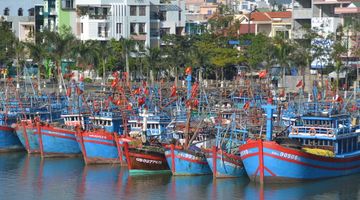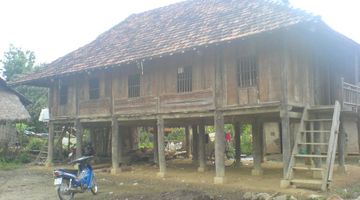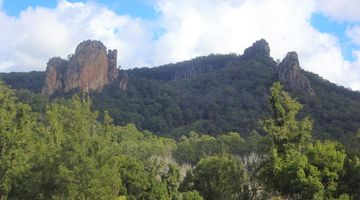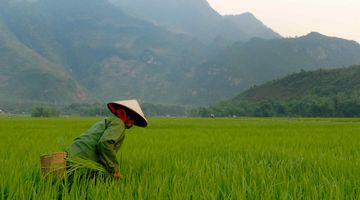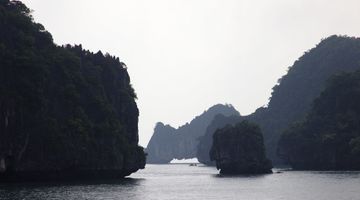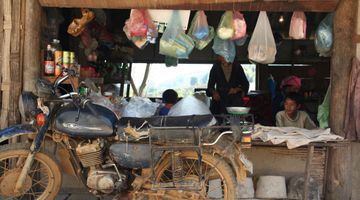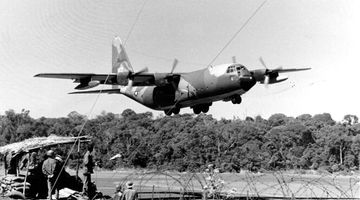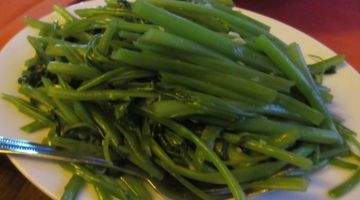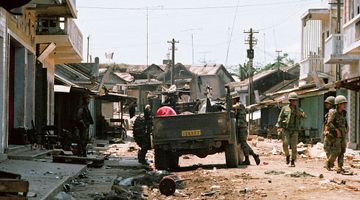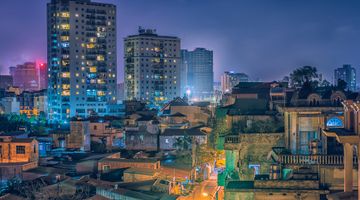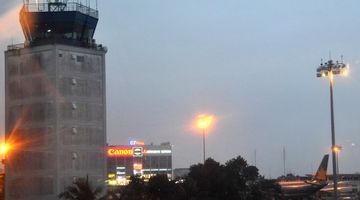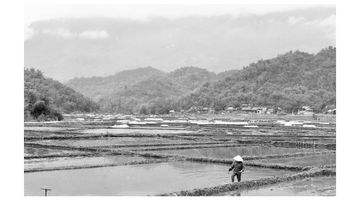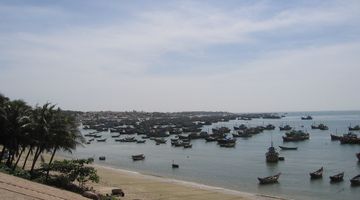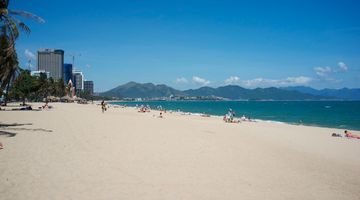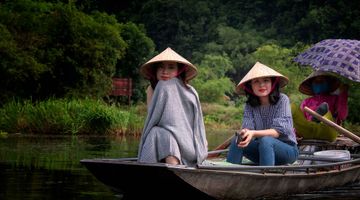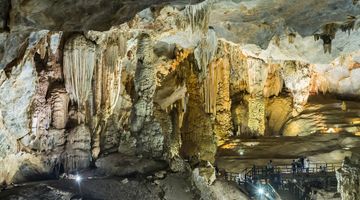Vietnam Top-15 Tourist Attractions
Vietnam attracts more visitors each year because of the diversity in landscapes, famous Vietnamese hospitality and the recent relaxation of visa rules. The following Vietnam top tourist attractions cover everything from the country’s breath-taking mountains and valleys to war tunnels and enigmatic temples.
1. Cu Chi Tunnels
Located approximately 50 kilometres (31 miles) from Ho Chi Minh City and accessible on either an organised or through independent travel, Cu Chi Tunnels is one of southern Vietnam’s most famous tourist attractions. During the Vietnam-American War, the vast network of tunnels housed and provided shelter for the Viet Cong Soldiers. After spending long periods of time underground, they were safe from attack while providing the opportunity to ambush enemies. Admission is 100,000 VND ($4.40). Visitors can walk around the complex, enter some of the tunnels and learn about Vietnam’s version of the war. It’s advisable to get an English speaking guide to explain the context to appreciate the experience fully. You can fire an AK47 for an extra cost at Cu Chi Tunnels too.
2. Independence Palace
Independence Palace, also called Reunification Palace, in Ho Chi Minh City was the residence of South Vietnam’s president before and during the war. On the 30th April 1975, Saigon fell. North Vietnamese tanks stormed through the gates, and the president surrendered. For 20,000 VND ($0.90), tourists can walk around the grounds, visit the palace’s rooms and pass through an underground bunker. A number of aircraft and tanks fill the outside. Guided tours are available and advisable.
3. Saigon Notre Dame
The French colonised Vietnam for more than 60 years in the late 19th and early 20th century. One of the legacies of this is the number of French-style buildings today. The most famous of these is Notre Dame in Ho Chi Minh City’s District One. Loosely based on the original in Paris and being a focal point for Catholicism in Vietnam, Notre Dame is a highlight of any trip to the city.
Outside, you’ll notice a statue of the Virgin Mary. A fascinating story shrouds the relic which began in October 2005. According to some, one day the figure shed a tear. Thousands of locals flocked to the statue to catch a glimpse of the apparent miracle and embraced the event as a religious sign. Others, on the other hand, attribute the mystery to a raindrop falling on the right place to create the illusion of a tear. Either way, it’s an interesting story that gives Notre Dame a special meaning in Ho Chi Minh City.
4. Saigon Post Office
The Saigon Post Office often ranks as one of the must see attractions in Ho Chi Minh City. Situated opposite Notre Dame and constructed by the French in the late 19th century, the building is often said to resemble a European train station more than a post office. Marvel at the eclectic combination of French, Gothic and Renaissance architectural styles from the outside. Go inside and find a fully functional post office and a large portrait of Ho Chi Minh himself adorning the wall. The Saigon Post office is one of the oldest buildings in the city.
5. Ben Thanh Market
The largest and oldest market in Ho Chi Minh City leaves tourists with both positive and negative impressions. A vast maze of stalls sell everything from Vietnamese products to souvenirs and serves up a large selection of traditional food towards the back of the market. The infamous snake wine is also sold here. Regardless of the day or time, Benh Thanh Market often bursts at the seams with locals and tourists. However, many complain about aggressive sales tactics, low quality and overpriced goods and pickpockets. Despite the negatives, most tourists enjoy the experience, and the market often ranks as one of the most famous tourist attractions in Vietnam.
If you do visit Ben Thanh Market, here’s a quick tip few foreigners know. As you walk in the main entrance opposite the large roundabout, stay in the lower left-hand quadrant, and you’ll find a currency exchange. This offers some of the best rates in all of the city. Occasionally they sell slightly higher than the official rate especially when buying foreign currency.
6. Ha Long Bay
Read any list of the top 10 tourist attractions in Vietnam and Ha Long Bay always ranks towards the number one spot. Located in northern Vietnam approximately three hours from Hanoi sits the UNESCO-listed paradise. This is the country’s most famous attraction that often puts them on the international radar. Picture a series of limestone islets surrounded by jade coloured water. Tourists can join a cruise from either Hong Gai or Bai Chay Port which takes passengers around the waters and rocks. Inside the labyrinth, you’ll see and experience floating villages, caves and caverns and have the opportunity to take the perfect photograph of Vietnam. Regular buses and tours depart from Hanoi to Ha Long Bay.
7. Hoan Kiem Lake
The ‘Lake of the Returned Sword’ known locally as Hoan Kiem Lake rates as one of the best attractions in Hanoi. Not only does the lake offer spectacular views and a place to relax in a serene environment, but the nearby temple is worth visiting too. Ngoc Son Temple, a pagoda on the small Jade Island in the centre of the lake, contains several ancient artefacts and a preserved giant turtle specimen.
8. Fansipan Mountain, Sa Pa
Anyone looking for an adventure and a challenge should attempt to climb Fansipan Mountain in Sa Pa. Indochina’s tallest peak soars more than 3000 metres into the air. From Hanoi, overnight trains (eight to nine hours) or a bus (six to seven hours) ferry tourists to the northern highlands. There are three famous routes to the summit depending on your level of fitness and time availability. Most take at least three days and two nights. All climbers need to bring their own equipment including a waterproof tent, sleeping bags, food and water.
If you don’t have much time and still want to experience the incredible views at the top, take the cable car. After opening in 2016, tourists can reach the summit of Fansipan for approximately $33 (USD) per person. Check in advance to make sure it’s operating when you visit.
9. Muong Hoa Valley Sa Pa
Another gem in Sa Pa: Muong Hoa Valley. The main highlights include the famous terraced rice fields, the ethnic communities of the Muong/Hmong tribes and incredible views as you ascend through the mountains. Just remember to be respectful towards the minority groups. Always ask permission before taking photographs. If you’re in Sa Pa, it’s possible to visit Muong Hoa and climb Fansipan. Plan to spend a week in the highlands, and it’s advisable to visit the valley first.
10. Ta Xua Mountain, Son La
One of the famous Vietnam tourist attractions among locals is Son La’s Ta Xua Mountain. Located 200 kilometres (124 miles) from Hanoi in North Vietnam, the 2865 metres (9400 feet) mountain offers climbers a unique experience. Weather permitting, the famous Sea of Clouds will appear as the clouds swirl around the peaks and valleys below. The best time to visit to go ‘cloud hunting’ is between December and March. However, expect the weather to be quite cold. Most tourists spend between two to three days including travelling six hours each way to and from Hanoi. Either hire a private driver from Hanoi or take the bus to Bac Yen in Son La Province and then a taxi to the mountain.
Visitors will find a number of homestays towards the top of the mountain for those wanting to wake up early to ‘catch the clouds’. Most are affordable but won’t be up to Western standards. Most have the basic amenities like hot water. Be aware that if the weather conditions are poor and foggy, you won’t be able to see the clouds. Bring some food as it can be difficult to find when you’re up in the mountains.
11. My Khe Beach Danang
Da Nang’s 10 kilometres (6.2 miles) My Khe Beach is one of the top things to see in Central Vietnam’s main city. Several resorts line the popular beach and the sand is clean making a perfect place to sunbath. If you want to rent a sunbed, head to one of the resort-owned stretches of beach and pay a small fee of 40,000 VND ($1.80). Compared to other stretches of Vietnam’s coastline such as Vung Tau in South Vietnam, My Khe is much cleaner and tourist-friendly. Expect the beach to be crowded especially during holidays and weekends with local tourists. You should also anticipate vendors constantly trying to tout coconuts, drinks and massages at inflated prices to foreign tourists.
12. Dragon Bridge Da Nang
Dragon Bridge is one of Da Nang’s most iconic attractions. Stretching 666 metres (2185 feet) over the Han River and opening on the 38th anniversary of the city’s liberation in 2013, Dragon Bridge is a great place to visit for a number of reasons. On weekends and holidays, fire and water shoot from the side of the bridge. This is combined with lights to create a fascinating and magical show. If you want to experience the Dragon Bridge after dark, head to one of the nearby cafés located along the river. Or you can also join a river cruise to get a different perspective.
13. Imperial City, Hue
If you like history, visit the Imperial City of Hue. The walled citadel is one of the Vietnam top tourist attractions containing several ancient temples, pagodas and tombs. The most famous pagoda is the Thein Mu, which covers seven stories and symbolic of the city of Hue. Walking around the old complex gives a feeling of being transported back in time. Be sure to take a few photographs of the nearby Perfume River too.
14. Tomb of Khai Dinh
Penultimate Emperor Khai Dinh ruled Vietnam between 1916 and 1925. After being accused of being pro-French by early Vietnamese nationalists, Khai Dinh became highly unpopular among his subjects. The Emperor designed his own tomb located a few kilometres from Hue combining elements of Eastern and Western styles of architecture. If you visit the large tomb that took a total of 11 years to construct, you’ll find most of the historical relics still intact.
15. Hoi An
UNESCO-listed Hoi An’s historical old town dates back to the 15th century offering a window into the former way of life of the Vietnamese. The name translates to ‘peaceful meeting place’ and boasts a variety of historical buildings, landmarks, pagodas and the 18th century Japanese Bridge. Hoi An is a popular town for expats.
Conclusion
Vietnam combines the historical, natural wonders, exotic temples with ancient citadels and mountainous villages. Take the time to explore the country away from the chaos of the major cities and be rewarded with the diversity and charm of one of the top South East Asian destinations.









